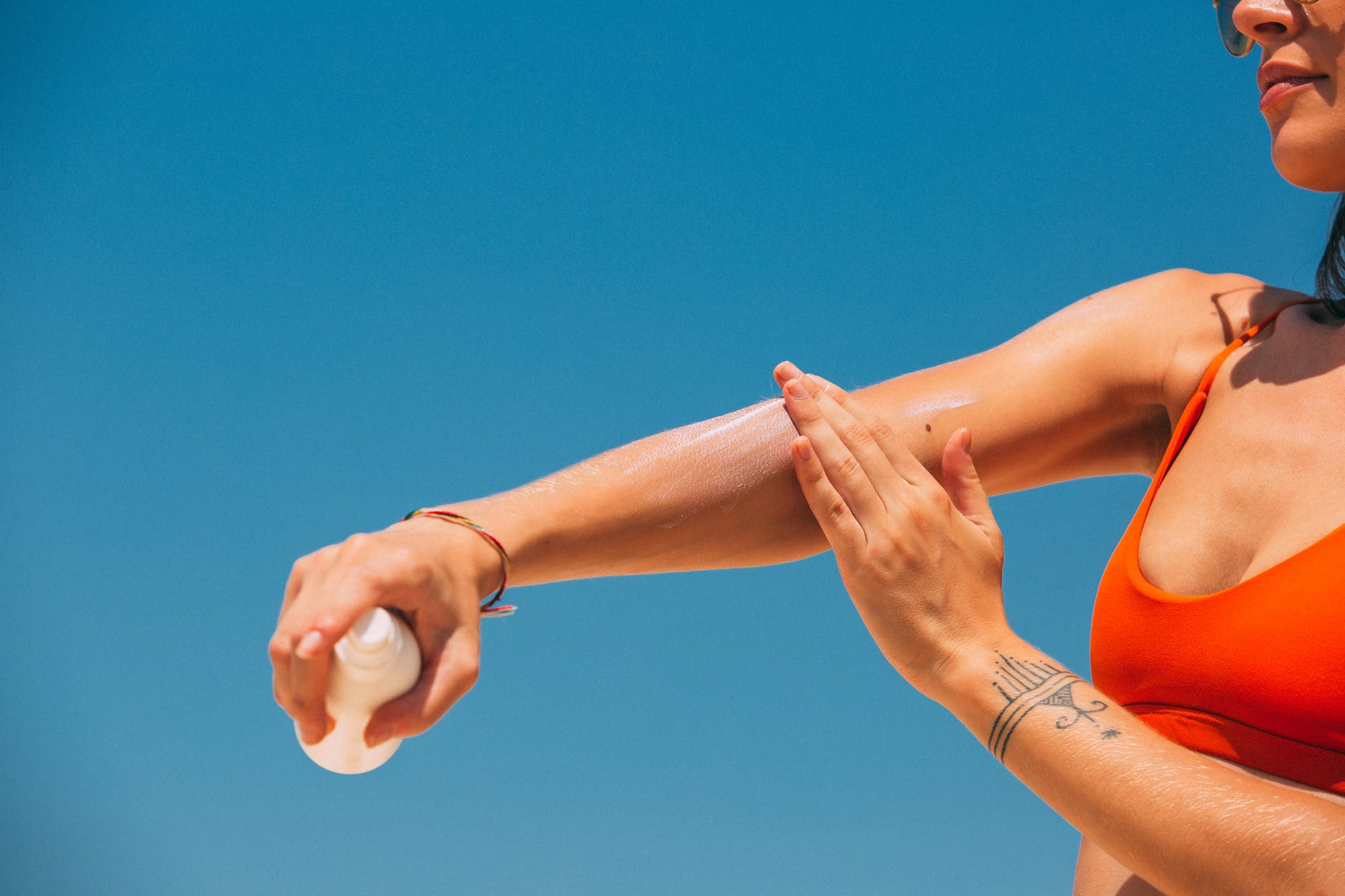In essence, sunscreen offers the best protection for your skin from UV rays. Prevention is always better than cure – it’s the same case in the beauty world too.
Today we’re diving into the topic of sunscreen or sunblock. Keep on reading for our easy-to-understand but thorough guide in learning about and choosing your ideal sunscreen!
What are UV rays? What do they do to our skin?
Sunlight is the main source of ultraviolet (UV) radiation in the form of UVA, UVB and UVC. There are also other man-made sources of UV rays that we come in contact easily in our daily life such as sunlamps and sunbeds, phototherapy and bulb lamps.
All of the UV rays cause damages to us, but UVC is mostly blocked by the earth’s atmosphere before reaching the ground so skin damage due to UV radiation is most probably brought by UVA and UVB.
Higher-energy rays can cause long-term DNA (genes) damage in cells, which in turn may lead to cancer. Most skin cancers are a result of exposure to the UV rays in sunlight.
It is also estimated that 70-80% of skin’s aging comes from the sun, largely because of UVA rays. Premature aging of the skin and signs of sun damage are wrinkles, leathery skin, liver spots, actinic keratosis, and solar elastosis, etc.
Besides, UVB rays are largely responsible for short-term skin damages such as skin tanning, sun burns and blisters.
Avoid exposure to UV radiation
There are ways to help you from getting too much sun exposure:
- Staying in the shade especially during midday hours
- Protect your skin with clothing that covers your arms and legs, such long-sleeve clothes; wear a hat to protect your head, face, and neck
- Wear sunglasses that block UV rays to protect your eyes and the skin around them
- Use sunscreen to help protect skin that isn’t covered with clothing
Besides, avoid tanning beds also helps you from receiving artificial UV rays.
Sunscreen: what does it do?
Sunscreen or sunblock, usually comes in 2 types: physical (also known as mineral) and chemical, to help prevent skin damage.
Physical sunblock usually contains zinc oxide and/or titanium dioxide that reflects UV rays. Chemical sunscreen typically uses actives like avobenzone, octinoxate, oxybenzone and homosalate which absorb UV rays.
What’s the better type?
Both types are effective in protecting you from skin damage.
Physical sunblock sits on top of the skin and reflects the sun’s rays. It doesn’t get absorbed into the skin. It is less irritating and a better fit for sensitive skin. It is often recommended for people with skin sensitivities, including acne, and is gentle enough to use on children. However, some people feel it is heavy on the skin and the white cast it leaves behind.
On the other hand, chemical sunscreen absorbs into the skin which will then absorb UV rays, convert them into heat, and release them from the body. Water-resistant formulated chemical sunscreen makes it a good option for swimmers and sporty people who tend to sweat a lot during the day. Since it can be absorbed into the skin, some people like it being lighter-weight on the skin. On the con side, there has been debate on its safety. A study has found that some ingredients used in chemical sunscreen enter the bloodstream after just one application and remain detectable in the blood and on the skin up to 3 weeks later — at concentrations passing the legal safety threshold.
The study authors emphasize the need for more research, but they also note their findings don’t suggest you should skip sunscreen. The best sunscreen is the one that you’ll wear it every day!
What does SPF mean? Is the number higher the better? Why should we look for “broad spectrum” protection?
SPF is short for Sun Protection Factor. The number that follows the term on any sunscreen product label is the measurement of UVB protection. It tells you how long the sun’s UV radiation would take to redden your skin when using the product versus the amount of time without any sunscreen.
SPF 30 blocks 97% UVB rays and takes you 30 times longer to burn; SPF 50 blocks 98%. It is recommended to use SPF 30 to 50 on a daily basis in order to get adequate protection from harmful UV rays. For outdoor activities, it may be a good idea to wear SPF 50 with water-resistant formulation and reapply it every 2 hours to be benefited from the higher SPF protection.
Broad-spectrum covers both UVA and UVB rays. Since both rays cause damages to our skin, it is important to use a broad-spectrum sunscreen with sufficient SPF to protect us from long and short term skin damage.
When should we wear a sunscreen?
Basically, everyday!
Even when the sky appears to be cloudy. If you have completed a laser or BBL procedure, you should wear a higher-factor sunscreen (e.g. SPF 50) and reapply it 2-4 hours, as your skin will be more sun sensitive post-treatment.
We at Medical Spa Club offer the Image Skincare PREVENTION+ daily ultimate protection moisturizer SPF 50 for your best protection. We have a tester on site for you to try out. Please come to 6611, No. 2 Road, Richmond, BC and grab one if you like it!
Besides, we also offer other premium skincare products with SPF for you to use on a daily basis.
If you require further skincare advice, please do not hesitate to contact us at 064-284-5501.






